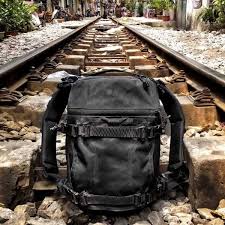
It is important to be aware of the dangers that can result from being in a snow-cave. You should always wear warm clothes, even if you are not an expert. Although temperatures in snow caves are usually pleasant, you may feel colder than normal. Regular breaks are important and you should avoid hurrying. It is possible to be injured in nature, which can result in a reduced ability to deal with it.
Falling water from above is the most dangerous danger in a snow cave. Avoid this by smoothening your snow cave's ceiling. Also, avoid putting your tent close to an unstable rock wall or a damaged tree. This will prevent water entering the snow cavern. It is important that you know where the snow-cave is located. It doesn't have to be a rocky area. You might consider using a shelter that has a snow shelter.

Locate a large, stable snowdrift to create a snow cave. If you don't locate a slope in your area, you can create a T by digging into the drift. An 18-inch entrance will be required and 2 feet by 2 feet of snow. You will then need to pack down the snow and create a door. Now you are ready to create a snow cave. Once you've set up your cave, make sure to mark it with a ski or wand.
A snow cave's structure is important. Loose snow cannot support a snow cavern. The roof and walls must be solid enough to protect you from cold. The entire structure could collapse if there is a large hole. Make sure to dig it to the ground. Once you have made a small, level hole, you can start shaping your snow cave. After that, you can start decorating your snow-cave.
To warm a snow cavern for two, you may be tempted by a kerosene torch or stove. This heating source can cause silent death. The gasses can build up and cause the victim to suffocate or even die from lack of oxygen. In these situations, it's best for the equipment and tools to be kept inside the snow cave. A shovel is a great tool to make digging more efficient.

To avoid falling from a snow cave, it is essential to be alert. It will be slippery when the snow gets warm so make sure you don't slip. The cave's ventilation will be affected if the ice is melted. This can cause cave suffocation. Fortunately, you can easily scrape off the ice each day. Once you have done this, your door will be open and you'll find a window that opens onto the snowy area.
FAQ
Where can you buy a gun Is it necessary?
A gun is required by law to hunt certain species.
Most states require hunters to own a firearm. It depends on what game you intend to hunt and where you live.
Any sporting goods store can sell you a rifle and shotgun, handgun, pistol, muzzleloader, crossbow or archery weapon.
Be sure to select the right weapon for your purposes. You might look at a.22 caliber gun if your goal is to hunt small game such as rabbits, squirrels, and pheasants.
You might consider purchasing a larger caliber weapon if you are planning to hunt large game such as deer, elk and bears.
If you don't feel confident handling a weapon, do not buy it. Guns can be very dangerous. Never load it until you are ready.
Be sure to inspect the gun before buying it. Ask the seller to show how to load and unload the weapon.
Make sure to check the warranty. If the warranty is not provided, inquire about what type of guarantee they provide.
Ask the dealer to provide you with a copy of their safety instructions. These documents should include information about safe storage and maintenance.
Check the serial number. If the serial number starts with "NIB", it means "New In Box," this indicates that the gun is brand-new.
If the serial number begins by an odd number, it means that the gun has previously been owned.
If you aren't sure whether the gun was ever used, please contact the manufacturer. They will be able to provide more information about the gun's history.
How many Americans are avid rifle hunters in the US
The number of hunters who use rifles as their primary weapon for hunting deer, elk, moose, etc., is estimated at around 2 million per year.
Most of these hunters are male and between 18 and 56 years old. They also come from rural areas.
They typically hunt alone, using either a bow or crossbow, and they usually hunt during daylight hours.
Whitetail deer (68%), mule deer (13%), and black bears (10%) are the most common targets for hunters.
Although there is no national data on how many women participate in this activity, anecdotal evidence suggests that participation rates among female hunters are increasing.
What training is necessary to become a hunter How long does it take?
Basic courses are required in order to learn how you can hunt. This course teaches you about different types of game and gives you information about the laws surrounding hunting.
You will learn how you can safely use ammunition and firearms. These items will be safely used.
This course can take anywhere from two to three weeks. Some courses are offered online. Some courses can be accessed online.
To qualify for a license, you must pass a written test. You might also need proof that you have completed a hunter's education course.
What does it cost to be licensed? What if my budget is limited?
It varies from one state to the next. It ranges from $20 to over $100.
You may be eligible for a loan, grant or other financial assistance if you don't have enough cash.
In addition to the fee, you will need to purchase a tag. Prices for tags vary depending on what type of game you hunt.
Tags are available for deer, elk, bear, moose, waterfowl, upland birds, and furbearers (such as foxes).
Some states require you register at the Department of Natural Resources before applying for a license.
Check the regulations in your area before you hunt.
Statistics
- - Percent of residents with paid hunting licenses: 0.7%- (stacker.com)
- Less than 1% of Hawaii's population has a hunting license. (stacker.com)
- In less than 20 years, Rhode Island saw a 40% drop in the number of hunting licenses for residents, according to The Valley Breeze. (stacker.com)
- - Percent of residents with paid hunting licenses: 0.7%- (stacker.com)
External Links
How To
How to choose the most desirable hunting spots in the forest
The first thing we should do when looking for good places to hunt is to know what kind of game we want to hunt. There are many types of wildlife and birds that live within forests. If you don't know what kind of animal you want to hunt, there won't be any places where they can be caught.
There are two main kinds of animals that can be found in the forest: large mammals, and small mammals. The large mammals are deer, elks and moose as well as caribou, bears, wolves, wild boar, and caribou. Small animals include rabbits. Each species needs its own habitat. Before you go out in the woods, it is crucial that you choose the right place. To find out if there are endangered species in your area, you can search the online flora-fauna list. Make sure the area you intend to hunt is free from poaching if you want to hunt that species.
You will need to be able to set up your equipment properly if you are going to hunt a specific species. It's important to use the correct equipment because it affects the success rate. You will need a gun that can accurately shoot at close range if you are hunting a rabbit. But a rifle that can easily shoot far distances is necessary if you are hunting a larger animal like a deer. You will also need bait to lure the prey. Some people suggest placing meat in a trap to attract the animal. Others prefer corn butter or peanut butter. No matter which method you choose to use, be sure you adhere to all the laws of the country in which you hunt.
You need to consider many factors when choosing a hunting location, including weather conditions, terrain, vegetation and wildlife population. Safety is paramount when choosing a hunting spot. Choose a location that is safe from predators and dangerous wildlife. Avoid areas with too many people, especially during hunting seasons. You should also take note of the seasons when hunting because this will help you determine the best times to hunt.
The weather is also important when you are choosing a hunting spot. It is important because it can affect the number or animals that will be there. Winter is when temperatures drop below zero degrees Celsius and snow covers the ground. The thick snow layer makes it difficult for coyotes, bears, wolves, deer and other animals to be seen. However, if you're lucky enough to get a clear day, you might be able to spot these animals. The temperatures in summer are above 30 degrees Celsius, which means the sun warms the Earth. Animals move away from the heat to seek shelter, making it easier to locate them.
The terrain should be considered as well. It is easier to walk or run on a flat surface, but it can be difficult to do so on uneven surfaces. Steep slopes are harder to climb, and rivers and streams often cause muddy trails. So that you can navigate the area easily, try to find a spot without any obstacles.
In addition to the terrain, you should also look at the vegetation. Plants can vary in size and density depending on their environment. For smaller animals, large trees can provide shade and cover while shrubs or bushes can offer shelter. You should search for dense vegetation if you wish to find large animals.
Also, it is important to consider the number of animals in your area. Statisticians estimate that North America has more than 100 million deer. They eat nearly half of all food produced by crops and are essential to maintaining biodiversity. But if they grow too large, they can become pests and cause damage to the ecosystem. Therefore, it is vital to keep the population balanced.